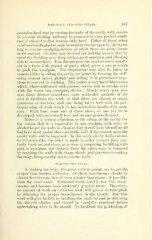Page 689 - My FlipBook
P. 689
PORCELAIN AND GULU INLAYS. 347
pound or hard wax by coating the walls of the cavity with vaselin
to prevent sticking, and may be removed in very perfect condi-
tion if allowed to first become fully hard. Either of these, when
reinforced with plaster, may be used to swedge upon by the water
bag or similar swedging devices of which there are many forms
in the market. Or they may be used for making reverse dies by
carefully building over them with a good amalgam and allowing
this to become hard. For this purpose the impression is usually
set in a form with plaster of paris, which gives a cup in which
to pack the amalgam. The impression may also be taken in
cement either by oiling the cavity, or better by forming the stiff-
ening cement into a globule and rolling it in pulverized soap-
stone to prevent its sticking. This makes a very hard impression
which, when reinforced with plaster, serves well to swedge over
with the water bag swedging device. Nearly every man who
uses these devices introduces some particular methods of his
own to facilitate the work, so that there are almost as many
processes as workers, each one doing fairly well with his par-
ticular plan of work which he has learned to handle with accu-
racy. With time, some one of these plans, or one yet to be
developed, will prove itself best and become generally used.
There is a serious objection to the oiling of the cavity for
the reason that it is impossible by any washing with ether or
alcohol to get the walls as clean as they would have been if no oil
had been used, and to that extent the hold of the cement upon the
cavity walls will be impaired. In this work, cavity walls can not
be trimmed after the inlay is made in order to have them per-
fectly fresh cut and clean, as is done in preparing for filling with
gold or amalgam, but deposits from the saliva may be removed
by scraping the walls with sharp chisels just previous to setting
the inlay, being careful not to cut the walls.
MAKING THE INLAY.
In making the inlay, the great esthetic points are to get the
proper translucence and color. Of these translucence should be
placed first because it is of even greater importance, if possible,
than the exact color. Extracted teeth quickly lose this trans-
lucence and become more uniformly grayish white. Therefore,
no amount of work on extracted teeth will give a certain guide
to obtaining the proper translucence in the mouth. But this
work will give facility in handling the material and in obtaining
the desired shades, and should be carefully practiced before
imdertaking work in the mouth. To facilitate the production of


